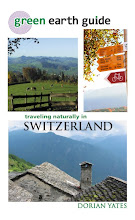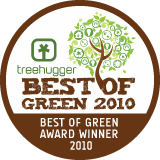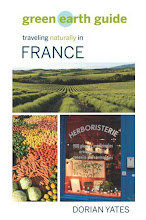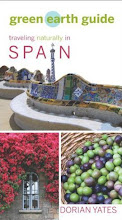

Portland is over the top in terms of fresh, local sustainably grown food. Some highlights are listed here, but you almost can't go wrong in Portland, so eat up and enjoy... and try not to miss the farmers market!
You can eat breakfast and lunch at the renowned Bijou Café serving up organic and local foods– get there before 2 or else you will miss out.
Bijou Café, 132 SW Third Ave, Portland; Tel: 503-222-3187; Open 7:00am – 2:00pm daily.
Two other restaurants especially known for good fresh, local meals include
Higgins, 1239 SW Broadway, 503-222-9070, and
Paley’s Place, 1204 NW 21st, 503-243-2403.
If you have a soft spot for food resembling fast food or diner-style, Portland has
Burgerville, a “fast-food” chain using local, sustainable products in their natural beef burgers, ice cream milkshakes and smoothies. Flavors vary seasonally based on available ingredients. When I was there in November, pumpkin was the flavor du jour. The pumpkins are grown by Stahlbush Farms committed to sustainable farming. Burgerville uses recycled paper napkins, supports wind power, converts their used cooking oil to biodiesel fuel, offers free wifi, and has real juke boxes. For locations and more information see
www.burgerville.comLocal health foods stores include New Seasons Markets which are locally owned and operated with nine stores in the Portland area, and Food Front Cooperative with two stores in Portland. Not surprisingly, you can also find Whole Foods and plenty of small specialty food stores.
New Seasons Markets -
www.newseasonsmarket.com; Open 8am-10pm;
Food Front Cooperative –
www.FoodFront.coop; open daily from 8:00am to 9:00pm.
Portland’s Farmers Markets rival any I have seen in Europe with an abundance of fresh, local and mostly organic foods from meats, cheeses, fruits and vegetables to coffees and oils. Open seasonally at different locations on Wednesdays, Thursdays and Saturdays. See the website for more information
www.PortlandFarmersMarket.org.
A very special store is in the northern part of the city in the neighborhood known as Mississippi. The Meadow sells salt, chocolate, wine and flowers from all over the world. It is a must stop for any salt connoisseur.
The Meadow, 3731 N. Mississippi Avenue, Portland 97227; Tel: 888-388-4633;
www.atthemeadow.com. Check out the Askinosie chocolate made with goat milk – it is incredible! (
www.askinosie.com)
While Seattle may have Starbucks, Portland has
Stumptown – the way hip, fair-trade, groovy coffee extraordinaire. Stumptown has cafes all over Portland, plus you can buy coffee by the pound in every health food and specialty store. Check it out -
www.stumptowncoffee.com.
Gluten-Free eaters – don’t miss the breads and treats from
New Cascadia Traditional: The Gluten-Free Artisans, a dedicated gluten-free bakery making out-of-this-world, hard-to-find, gluten-free sourdough and baguette breads. I was so mad I only bought one loaf at the farmers market. You can now buy all their products at the farmers market and their new retail store. New Cascadia Traditional, NW Glisan St. (between NW 21st & 22nd Ave, next to Trader Joes), Portland, OR 97208, Tel: 503-887-4392; NewCascadia@hotmail.com;
www.newcascadiatraditional.com. Open Tuesday to Friday from 11:00am to 6:00 pm and Saturday from 11:00am to 5:30pm
Another over the top treat is the smoked salmon and salmon “jerky” from
The Smokery. Made by an Irish couple who moved to Oregon and employ their Irish traditions in the smoking of Pacific Northwest Salmon. Available at the farmer’s market and online at
www.thesmokery.com.
Portland is home to one of the few accredited Naturopathic Medical Colleges in the United States, the National College of Natural Medicine (
www.ncnm.edu) so alternative health services are prevalent in the city. For Chinese Medicine, Acupuncture, Massage and Naturopathic care including nutritional infusions there is the
Mississippi Health Center, 4631 N. Albina, Portland, OR 97217; Tel: 503-282-5358;
www.mississippihealthcenter.com; Open Monday- Saturday by appointment and also walk-in herbal consults.
The Pearl Health Center in, you guessed it, the Pearl District, offers allopathic and alternative care. They offer a prepaid health plan as well as pay as you go. The Pearl Health Center, 721 NW 9th Ave., Suite 100A, Portland; Tel: 503-525-0090;
www.pearlhealthcenter.com.
Other great resources:
•
Pittmon Map Company, 825 SE Hawthorne Blvd, Portland; 503-233-2207
•
Redirect Guide for Portland and Vancouver areas, a one-inch thick business directory of all things green,
www.redirectguide.com available free at many stores.
• The entire
Oregon coast is free and open to everybody-
www.visittheoregoncoast.com•
Edible Portland quarterly free magazine with articles and ads from many of the wonderful natural, local foods restaurants and businesses –
www.edibleportland.com•
The Portland Red Guide, written by retired political science professor, Michael Munk, offers a guide through the radical history of Portland










































